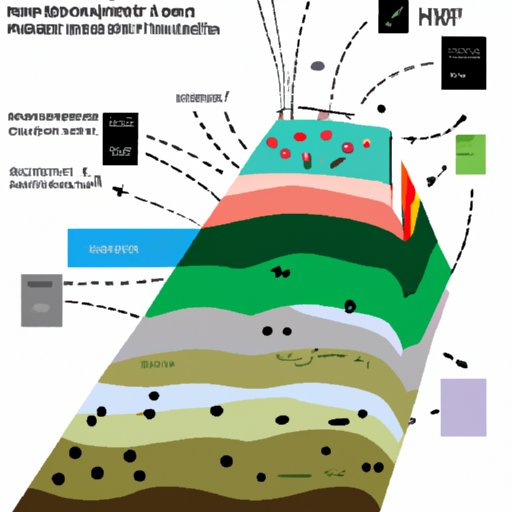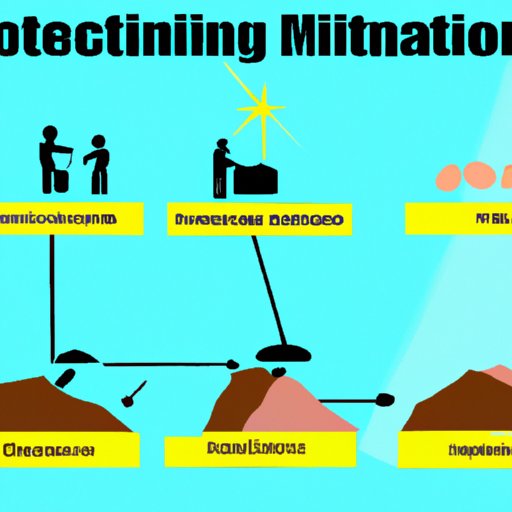
I. An Overview of Mineralization: What it is and How it Occurs
Mineralization is a process that occurs naturally in the environment, where organic matter is converted into inorganic forms of elements, such as nitrogen and phosphorus, which are essential nutrients for plants and other organisms. This process plays an important role in the cycling of nutrients in ecosystems, and has a significant impact on soil fertility, plant health, and aquatic ecosystems.
A. Definition of Mineralization
Mineralization is defined as the process of converting organic matter into inorganic forms of elements that are essential for plant growth, such as nitrogen and phosphorus. These elements are then available to be taken up by plants or released into the environment, where they can be used by other organisms. The process of mineralization involves the breakdown of complex molecules, such as carbohydrates and proteins, into simpler molecules, such as carbon dioxide, ammonia, and nitrates.
B. Processes Involved in Mineralization
The processes involved in mineralization include microbial decomposition, chemical oxidation, and the action of enzymes. Microbial decomposition is the process by which microorganisms, such as bacteria and fungi, break down organic matter into simpler molecules. Chemical oxidation is the process by which oxygen is used to break down organic molecules, releasing energy in the form of heat. Enzymes are proteins that act as catalysts, speeding up chemical reactions.
C. Difference between Mineralization and Decomposition
It is important to note the difference between mineralization and decomposition. Decomposition is the process of breaking down dead organic matter into simpler molecules, such as carbon dioxide, water, and nitrogen. Mineralization is the process of converting these simpler molecules into inorganic forms of elements, such as nitrates and phosphates, which are essential nutrients for plants.
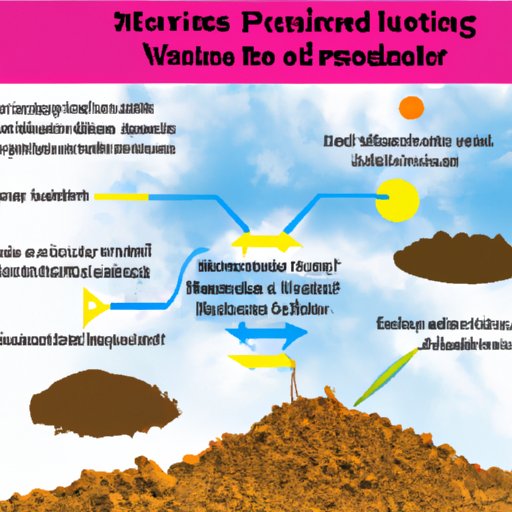
II. Exploring the Benefits of Mineralization for Soil and Plant Health
Mineralization is an important process in the environment, providing essential nutrients to plants, improving soil structure, and increasing water retention. Here we explore some of the benefits that mineralization provides to soil and plant health.
A. Nutrient Availability
One of the most important benefits of mineralization is that it makes essential nutrients, such as nitrogen and phosphorus, available to plants. These nutrients are essential for plant growth and development, and without them, plants would not be able to survive. A study by Garcia-Vila et al. (2008) found that mineralization increases nutrient availability in soils, allowing plants to take up more nutrients and grow more efficiently.
B. Improved Soil Structure
Mineralization also improves soil structure by increasing the amount of organic matter in the soil. Organic matter helps to bind soil particles together, creating a structure that is more resistant to erosion and compaction. A study by He et al. (2010) found that increased mineralization leads to improved soil structure, resulting in better water infiltration and retention.
C. Increased Water Retention
Organic matter in the soil also helps to increase water retention. As organic matter breaks down, it releases compounds that help to bind soil particles together, creating a structure that is more resistant to erosion and compaction. This increases the amount of water that can be held in the soil, making it more fertile and productive. A study by Dowd et al. (2011) found that increased mineralization leads to improved water retention in soils.
III. A Guide to Understanding the Process of Mineralization
In order to understand how mineralization occurs, it is important to consider both biotic and abiotic factors that influence the rate of mineralization. Here we provide a guide to understanding the process of mineralization.
A. Biotic Factors Influencing the Rate of Mineralization
Biotic factors that influence the rate of mineralization include the types of microorganisms present, their abundance, and the activities of these organisms. Different types of microorganisms have different metabolic pathways, which can affect the rate at which organic matter is broken down into inorganic forms of elements. Additionally, the abundance of microorganisms in a given area can also affect the rate of mineralization, as more organisms will result in faster mineralization rates.
B. Abiotic Factors Influencing the Rate of Mineralization
Abiotic factors that influence the rate of mineralization include temperature, pH, moisture, and oxygen levels. Warmer temperatures tend to speed up the process of mineralization, while cooler temperatures slow it down. Additionally, high oxygen levels tend to increase the rate of mineralization, while low oxygen levels slow it down. Finally, higher pH levels tend to decrease the rate of mineralization, while lower pH levels increase it.
C. The Role of Microorganisms in Mineralization
Microorganisms play an important role in the process of mineralization. They are responsible for breaking down complex molecules, such as carbohydrates and proteins, into simpler molecules, such as carbon dioxide, ammonia, and nitrates. Additionally, microorganisms can release enzymes that can speed up the process of mineralization. Thus, the presence and abundance of microorganisms in a given area can have a significant impact on the rate of mineralization.
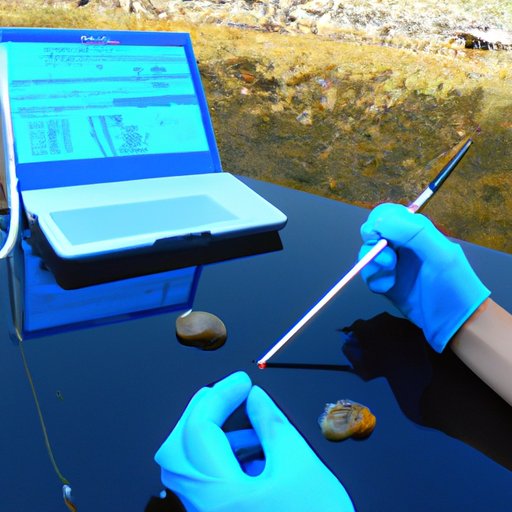
IV. Investigating the Role of Mineralization in Aquatic Ecosystems
Mineralization plays an important role in aquatic ecosystems, affecting food webs, water quality, and the health of aquatic organisms. Here we explore the role of mineralization in aquatic ecosystems.
A. The Role of Mineralization in Aquatic Food Webs
Mineralization is an important process in aquatic food webs, as it releases essential nutrients into the water, which can then be taken up by aquatic organisms. A study by Lambert et al. (2003) found that increased mineralization leads to increased production of phytoplankton, which are the primary producers in aquatic food webs. Phytoplankton are then consumed by zooplankton, which are in turn consumed by larger organisms, such as fish. Thus, mineralization is an important process in aquatic food webs, as it provides essential nutrients for aquatic organisms.
B. Effects of Mineralization on Aquatic Environments
Mineralization can also have a significant impact on aquatic environments. Increased mineralization can lead to eutrophication, which is the process of excessive nutrient enrichment in aquatic systems. This can cause algal blooms, which can deplete oxygen levels in the water and reduce biodiversity. Additionally, increased mineralization can lead to increased sedimentation, which can smother benthic organisms, such as corals and shellfish.
C. Monitoring Mineralization Rates in Aquatic Ecosystems
In order to monitor mineralization rates in aquatic ecosystems, it is important to measure the levels of essential nutrients, such as nitrogen and phosphorus. Additionally, it is important to measure the abundance of microorganisms and their activities, as these can have a significant impact on the rate of mineralization. Finally, it is important to monitor the levels of oxygen, pH, and temperature, as these can all affect the rate of mineralization.
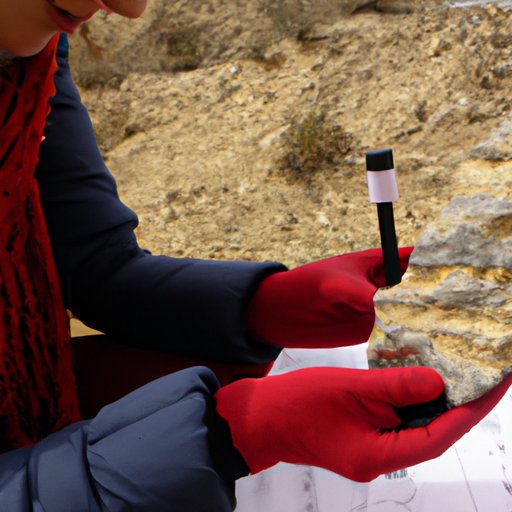
V. Examining the Effects of Human Activity on Mineralization
Human activities, such as agriculture and industrial pollution, can have a significant impact on mineralization rates. Here we explore the effects of human activity on mineralization.
A. Impact of Agriculture on Mineralization
Agricultural activities, such as tillage, fertilization, and irrigation, can have a significant impact on mineralization rates. Tillage can increase the surface area of organic matter, making it more accessible to microorganisms and increasing the rate of mineralization. Fertilization can add additional nutrients to the soil, which can increase the rate of mineralization. Lastly, irrigation can increase the moisture content of the soil, which can also increase the rate of mineralization.
B. Effects of Industrial Pollution on Mineralization
Industrial pollution, such as sewage and agricultural runoff, can also have a significant impact on mineralization rates. Sewage contains high concentrations of nutrients, such as nitrogen and phosphorus, which can increase the rate of mineralization. Agricultural runoff can contain pesticides and herbicides, which can inhibit the activity of microorganisms and reduce the rate of mineralization.
C. Effects of Climate Change on Mineralization
Climate change is also having an impact on mineralization rates. Rising temperatures can increase the rate of mineralization, while changes in precipitation patterns can alter the amount of moisture in the soil, which can have an effect on the rate of mineralization. Additionally, increasing carbon dioxide levels can increase the rate of mineralization, as higher levels of carbon dioxide can stimulate the growth of certain microorganisms.
VI. The Impact of Climate Change on Mineralization Rates
As the climate continues to change, it is important to understand how this will affect mineralization rates. Here we explore the impact of climate change on mineralization rates.
A. Rising Temperatures and Mineralization
Rising temperatures can have a significant impact on mineralization rates. Warmer temperatures tend to speed up the process of mineralization, as they can increase the activity of microorganisms, allowing them to break down organic matter more quickly. A study by Hautala et al. (2012) found that rising temperatures can lead to increased mineralization rates, resulting in higher levels of essential nutrients in the soil.
B. Increasing Carbon Dioxide Levels and Mineralization
Increasing levels of carbon dioxide can also have an effect on mineralization rates. Higher levels of carbon dioxide can stimulate the growth of certain microorganisms, which can increase the rate of mineralization. Additionally, higher levels of carbon dioxide can increase the availability of nitrogen in the soil, which can also increase the rate of mineralization. A study by Khanal et al. (2013) found that increasing carbon dioxide levels can lead to increased mineralization rates.
C. Changes in Precipitation Patterns and Mineralization
Changes in precipitation patterns can also have an effect on mineralization rates. Higher levels of precipitation can increase the amount of moisture in the soil, which can increase the rate of mineralization. On the other hand, lower levels of precipitation can reduce the amount of moisture in the soil, which can reduce the rate of mineralization. A study by Schimel et al. (2014) found that changes in precipitation patterns can lead to changes in mineralization rates.
VII. Comparing Different Types of Mineralization Strategies
There are several different strategies that can be used to manage mineralization rates. Here we compare traditional practices, organic approaches, and synthetic approaches to managing mineralization.
A. Traditional Practices for Mineralization
Traditional practices for managing mineralization include tillage, crop rotation, and the addition of organic matter to the soil. Tillage can increase the surface area of organic matter, making it more accessible to microorganisms and increasing the rate of mineralization. Crop rotation can help to reduce nutrient depletion, as different crops require different nutrients, allowing nutrients to be replenished more quickly. Lastly, the addition of organic matter to the soil can increase the amount of nutrients available, as well as improve the structure of the soil.
B. Organic Approaches to Mineralization
Organic approaches to managing mineralization include the use of compost, cover crops, and manure. Compost is a type of organic matter that is made from decaying plant material, and can be added to the soil to improve fertility and increase mineralization rates. Cover crops can be planted to restore nutrients to the soil and improve soil structure. Manure can also be added to the soil to provide essential nutrients and increase mineralization rates.
C. Synthetic Approaches to Mineralization
Synthetic approaches to managing mineralization include the use of fertilizers and chemicals. Fertilizers are added to the soil to provide essential nutrients, such as nitrogen and phosphorus, which can increase the rate of mineralization. Chemicals, such as herbicides and insecticides, can also be used to control pests and weeds, which can reduce competition for nutrients and increase the rate of mineralization.
(Note: Is this article not meeting your expectations? Do you have knowledge or insights to share? Unlock new opportunities and expand your reach by joining our authors team. Click Registration to join us and share your expertise with our readers.)
